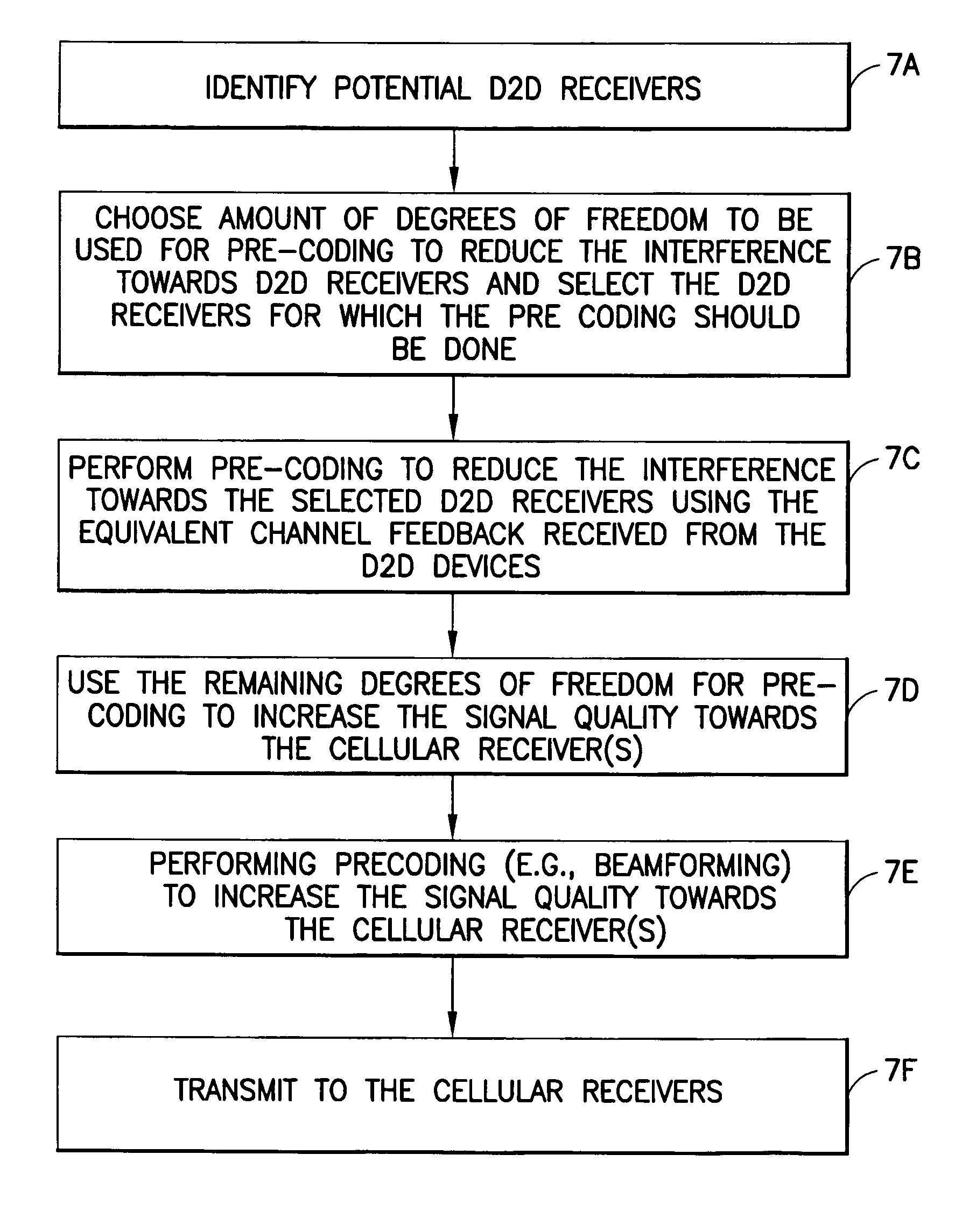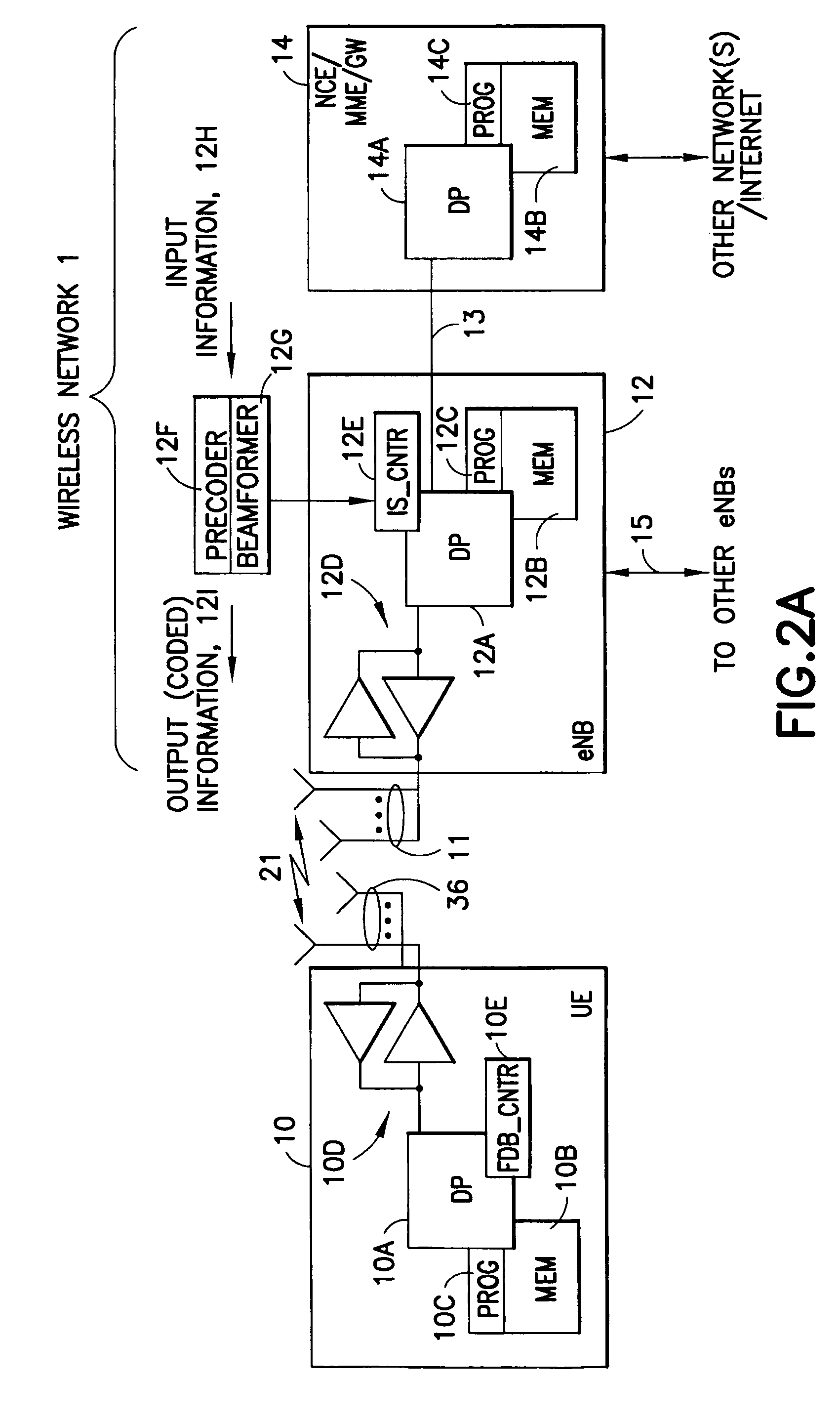Interference suppression during device-to-device communications
a technology of device-to-device communication and suppression, applied in the field of interference suppression techniques, can solve the problems of not considering the rank reduction of the effective channel, the feedback mechanism is not suitable for interference cancellation towards a d2d receiver, etc., and achieves the effect of suppressing interference, increasing signal quality, and increasing signal quality
- Summary
- Abstract
- Description
- Claims
- Application Information
AI Technical Summary
Benefits of technology
Problems solved by technology
Method used
Image
Examples
Embodiment Construction
[0038]In addition to the two 3GPP specifications noted in the background section, reference may also be made to 3GPP TS 36.211, V8.5.0 (2008-December), 3rd Generation Partnership Project; Technical Specification Group Radio Access Network; Evolved Universal Terrestrial Radio Access (EUTRA); Physical channels and modulation (Release 8).
[0039]D2D communication is currently one area of study, as the use of device-to-device communication enables the creation of new and useful types of services.
[0040]The exemplary embodiments of this invention provide, in one aspect thereof, a novel MIMO precoding scheme to facilitate operation of device-to-device communication on the same radio resources that another system, such as an LTE system, operates on in the same geographic area. The exemplary embodiments of this invention further provide, in another aspect thereof, a novel feedback scheme based on MIMO precoding that reduces the number of antennas needed for the MIMO precoding scheme.
[0041]Befo...
PUM
 Login to View More
Login to View More Abstract
Description
Claims
Application Information
 Login to View More
Login to View More - R&D
- Intellectual Property
- Life Sciences
- Materials
- Tech Scout
- Unparalleled Data Quality
- Higher Quality Content
- 60% Fewer Hallucinations
Browse by: Latest US Patents, China's latest patents, Technical Efficacy Thesaurus, Application Domain, Technology Topic, Popular Technical Reports.
© 2025 PatSnap. All rights reserved.Legal|Privacy policy|Modern Slavery Act Transparency Statement|Sitemap|About US| Contact US: help@patsnap.com



